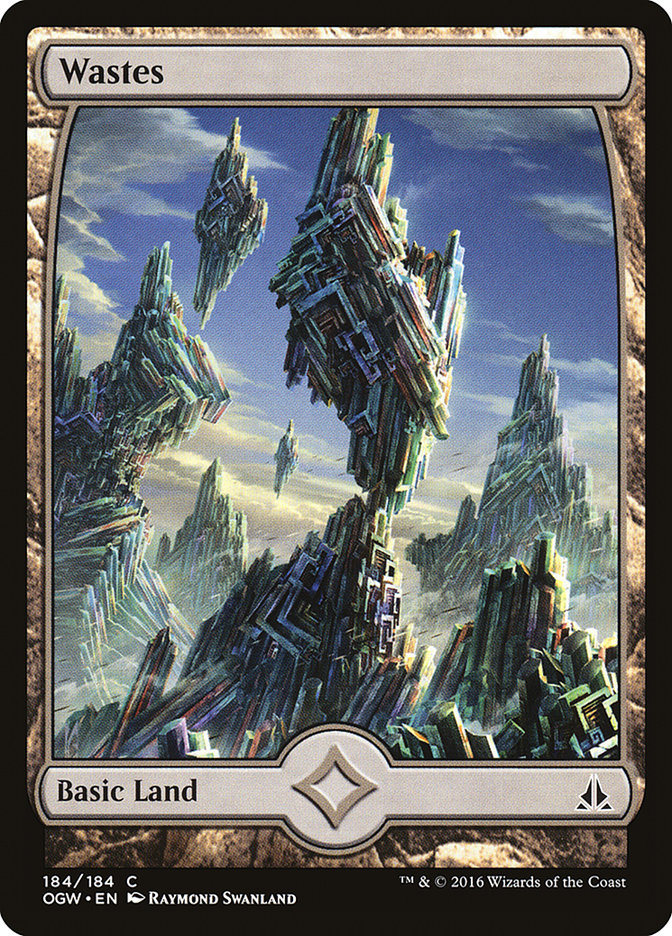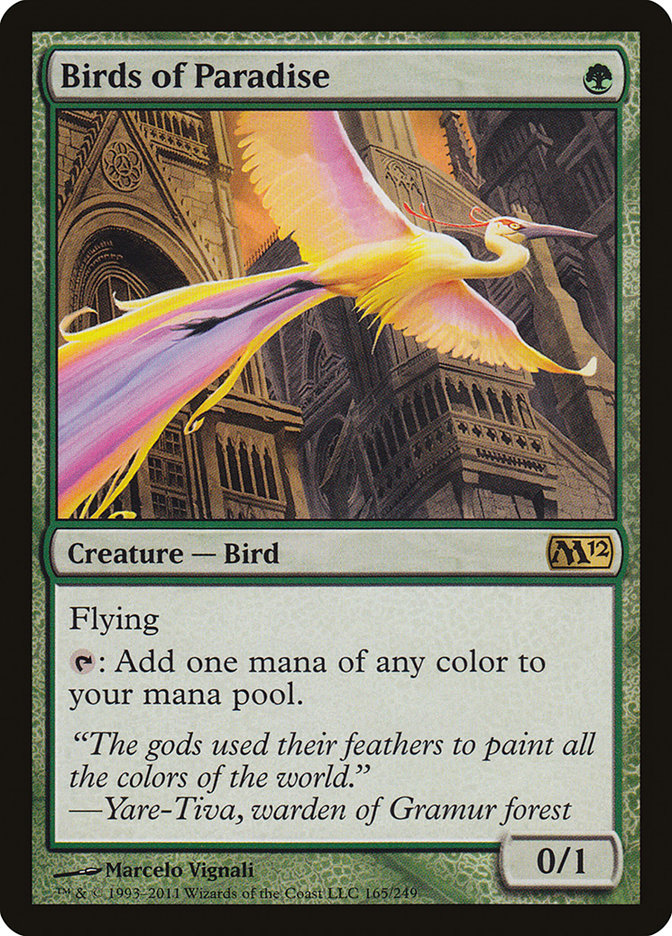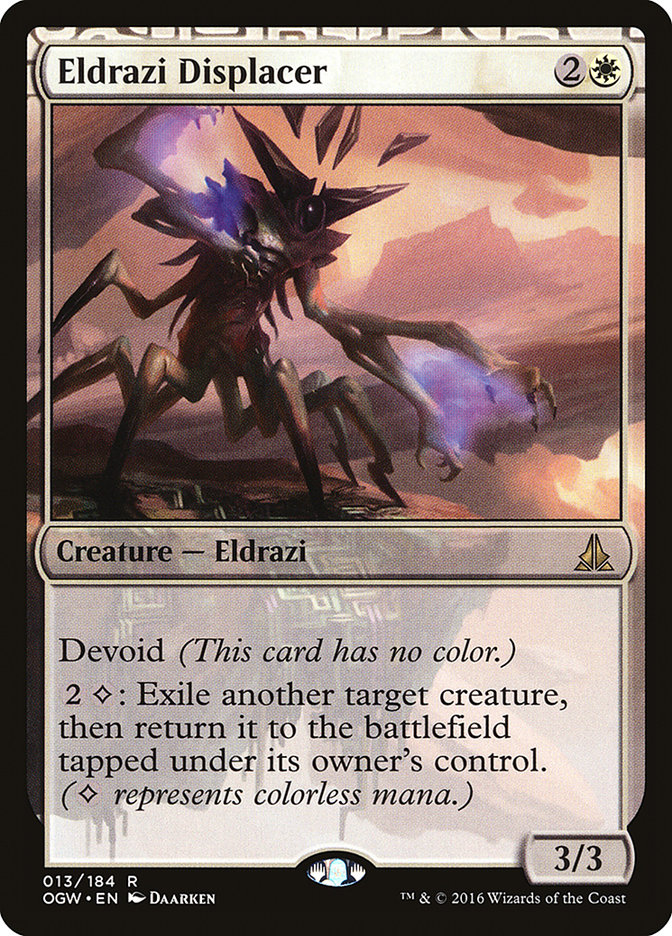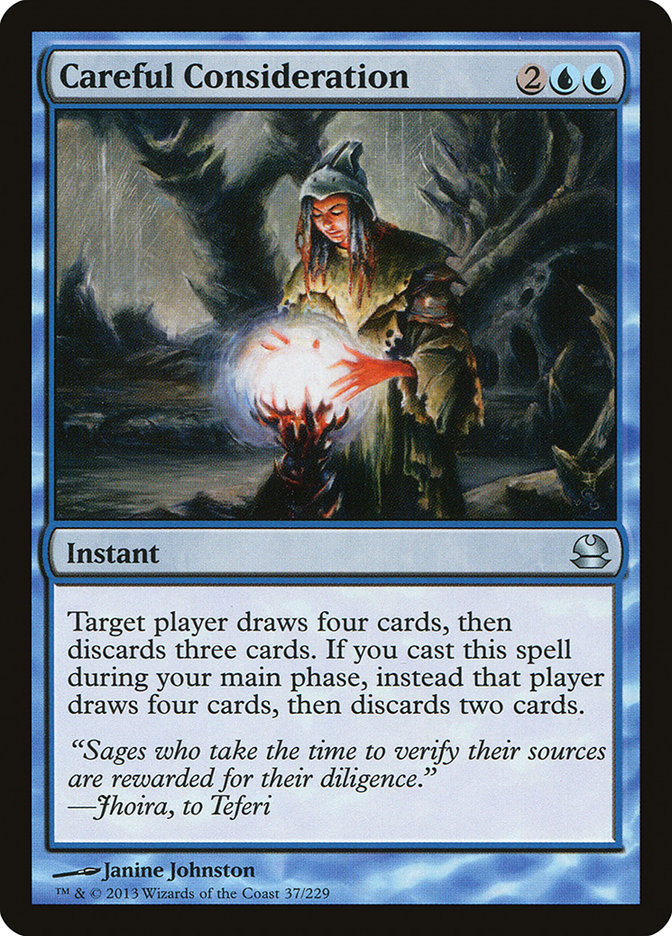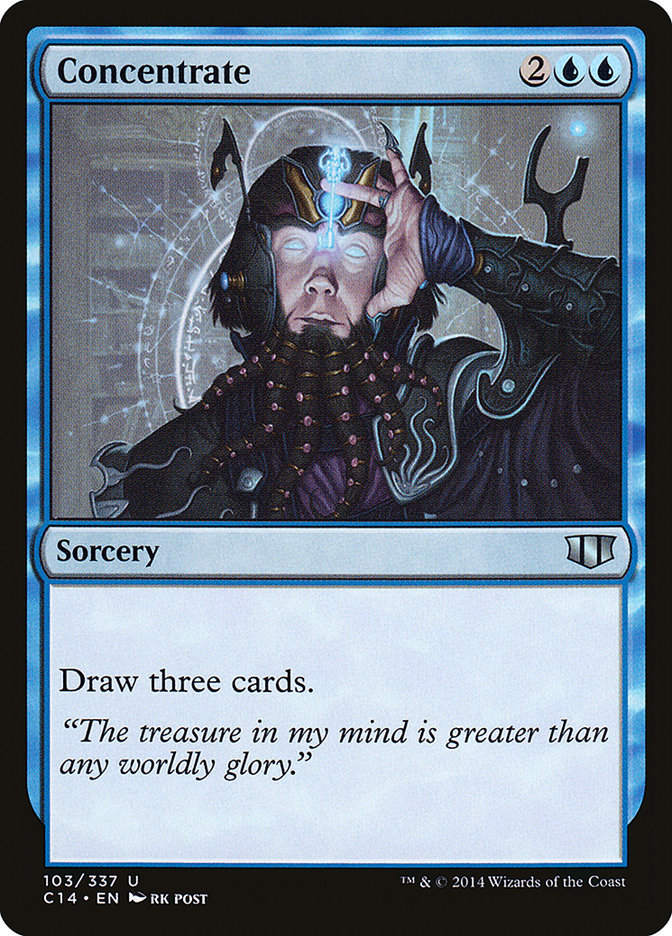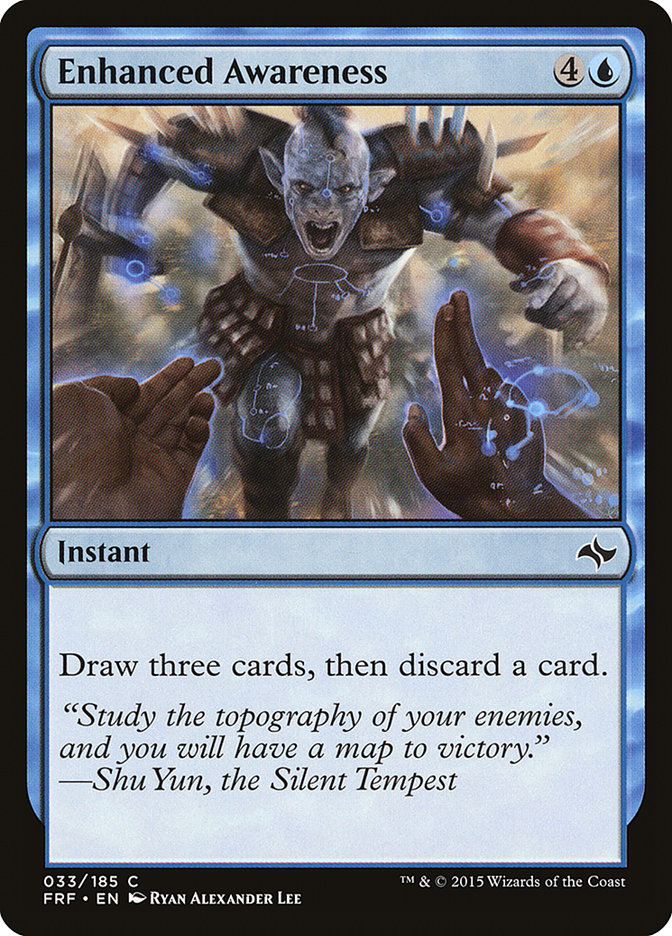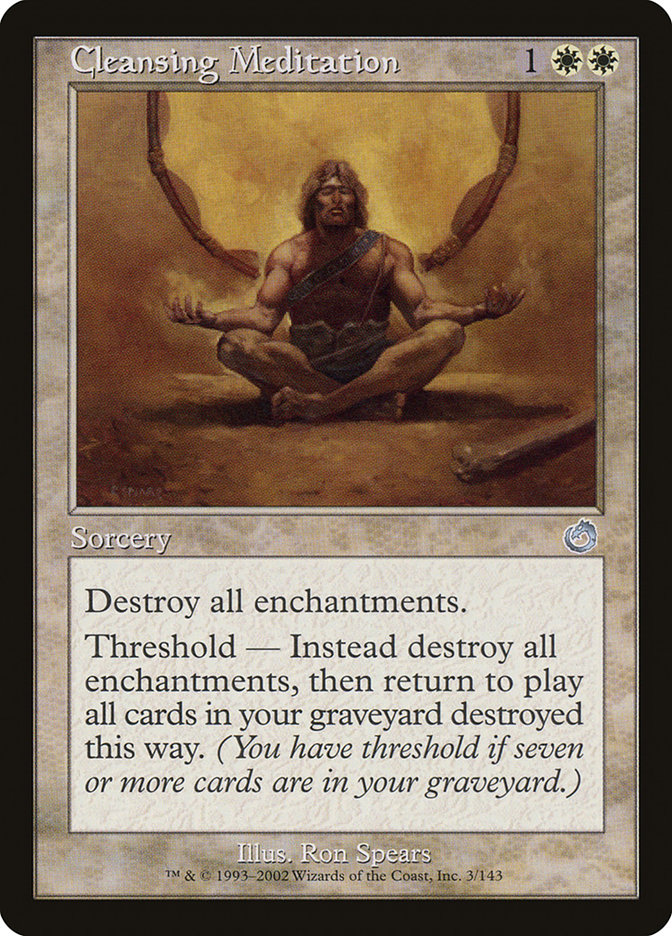Introduction to Momir Basic
Momir Basic is a broad, dueling, Casual Magic format that is only played on Magic Online. Each player begins with a Momir Vig avatar, 24 life, and a deck of 60 basic lands. Once per turn, a player can pay X mana and discard a card to get a token copy of any random creature with converted mana cost X that’s ever been programmed into MTGO. (Sorry, Frankie Peanuts!)
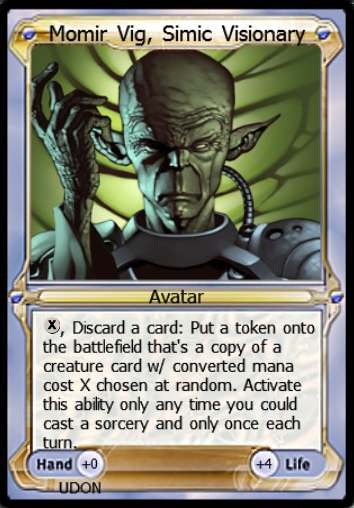
Deck construction is pretty simple: choose 60 basic lands, and you’re good to go. You can try to include certain amounts of different lands to pay for activated abilities and avoid opposing landwalk abilities, but I don’t bother. I run an even split of ten of each basic, including Wastes.
It’s fairly common to skip activating your avatar’s ability until you get to three mana, since Magic has a long history of terrible one- and two-drops and you’ll be left with more cards later in the game. However, if you luck out with a mana creature early, you’re in great shape.
Like in Limited, creatures with evasion are extremely valuable. This is a format of gummed-up battlefield states and ever-changing combat math, so skipping that is great. Haste creatures are also valuable, so it’s often correct to play your creatures pre-combat. Plus, the information asymmetry that comes from knowing something your opponent doesn’t when you attack doesn’t exist.
Because Momir Basic is a format without any non-creature spells, removal is hard to come by. Finding a pinger like Goblin Sharpshooter or actual removal like Shriekmaw or Intrepid Hero can be game-breaking. And because everything is a token, Eldrazi Displacer is removal and Kederekt Leviathan is a battlefield wipe on a stick.
Once you get up to the higher mana costs, the game often takes huge swings. You might get a Platinum Angel that puts you squarely in the driver’s seat, or you might get Phage, the Untouchable for an instant loss. Are you willing to play the seven-mana lottery?
But what does such a random format have to do with competitive Magic? Let me explain.
Strategy over Luck
When explaining Magic to people who don’t play, it’s common to describe it as a mix of chess and poker. It’s a long-thinking strategy game with hidden information, the ability to bluff, and a bit of luck.
Momir Basic leans more towards the chess side of that description than you might think. Hidden information simply doesn’t exist in the format, so you’ll never have to read your opponent for removal or combat tricks. Variance still exists, but you never have to mulligan and you can make every land drop.
Because you can’t really plan ahead in this format, you can’t give yourself tunnel vision and think too far ahead of yourself. Competitive concepts like card advantage and identifying the beatdown become central to success. Playing to your outs becomes a game of discovering what they could be, which can strengthen your critical thinking in Constructed formats. And because you never know what creature you’ll get, your ability to turn a bad situation into a favorable one will be tested.
Aside from random fantastic creatures like Herald of Leshrac breaking the game, the player with better technical plays and tighter strategy usually wins a game of Momir Basic.
All About the Battlefield State
Momir Basic is simpler than other Magic formats because it takes away several variables. You don’t have to worry about deckbuilding or metagaming before the game begins. You don’t have to think about hidden information or combat tricks. You can’t play combo, and you can’t play control. Everything in the game is focused on the creatures, the battlefield, and combat. When the game is reduced to a narrow aspect, you can hone the skills you need to succeed at it.
Many players find themselves at a plateau when they begin playing competitively, linked with keeping the battlefield state in their head. It can be hard to pay attention to every creature and all of their abilities, the possibilities for upcoming combats, and how the battlefield might change. If you find yourself rebuilding this mental model every time you enter combat, Momir Basic can help you improve.
The battlefield in Momir Basic changes in wild ways every turn. Creatures attack side by side that would never be put into the same Constructed or even Limited decks. New creatures enter the battlefield that have no synergy with anything else. Without the ability to rely on expectations, your mental flexibility is exercised and you get better at keeping up with evolving battlefields.
When I broke through this weakness myself, I started making Top 8 at StarCityGames.com Invitational Qualifiers and earning prizes at Classics on the SCG Tour®. Without the ability to keep the battlefield in my head without discarding it every turn, I had been capped at only being able to take down FNMs.
Constant Evaluation
Information is constantly added to a game of Momir Basic, and both players become aware of it at the exact same time. Because of this randomness, you quickly become practiced in evaluating threats and roles. The ability to evaluate that information and pivot your game plan is key in your games of competitive Magic, too.
Whether you’re playing a game of Limited with a set you’re new to or a constantly evolving format like Standard, you need to be flexible in your games. Which player is the beatdown could change at any point. The clock you have on your opponent can increase or decrease, buying valuable turns. Answering the biggest threat leaves behind a new menace to worry about.
When you play games of Momir Basic, the time spent outside of combat exercises your ability to see the changes that happen outside of the battlefield. You begin to think not only what your best move is, but what your opponent’s would be as well. These things define your role in the matchup, and if you play to your role, you can more easily position yourself to win the game.
Plus, you’re already used to playing against unexpected threats. This puts you at an advantage when playing against rogue brews or hot new decks that might otherwise throw you off. My recent experience at the #SCGATL Classic, playing against the uncommon Modern Abzan Aristocrats, was made easier because I was able to quickly pivot my gameplan when big plays like Rally the Ancestors or Return to the Ranks resolved.
Creatures (29)
- 4 Tidehollow Sculler
- 4 Viscera Seer
- 2 Doomed Traveler
- 4 Blood Artist
- 3 Cartel Aristocrat
- 4 Voice of Resurgence
- 4 Satyr Wayfinder
- 4 Zulaport Cutthroat
Lands (21)
Spells (10)

Living in the Moment
I got into Magic fairly late in my life, so I didn’t get much time playing at a casual level. I have a very competitive personality, so I threw myself into the tournament scene just months after picking up my first preconstructed deck. However, Momir Basic still serves as a way for me to have fun with Magic when I’m feeling burnt out on competitive play.
It’s important to be able to distance yourself from the game when you’re playing competitively. You should absolutely focus on your match when seated across from your opponent and take every opportunity to play well and win the game. But when you step away from the table, it’s healthy to be able to look around and realize you’re in a giant room with a bunch of other people who are all playing a great game. You’re all joined by a shared interest and common competitive nature.
Even in the middle of a game, be sure to keep a level head and try not to allow your emotions affect your plays. If you make a play mistake, move on and evaluate how to recover from there. Focusing on past mistakes will only make you more distracted, which won’t help your situation. Surely it can’t be worse than the time you got an un-kicked Desolation Angel in Momir Basic!
It helps me to look back at some of my casual Magic memories, like playing the seven-mana lottery or shouting “WUBRG!” when I get one of each basic land as if I were playing Rummy. A smile on my face that’s still connected to the game of Magic gets me in the right state of mind to leave behind any losses from earlier in the day. I can go into the next round with a clear and level head, ready to focus and win.
Conclusion
Momir Basic is a fun way to improve at competitive Magic. By reducing the game to a subset of the skills you need to succeed at high-level play, it gives you focus. It is not competitive Magic, but its differences that set it apart are what make it so great.
You learn to separate the swings that are caused by luck from those that are maneuvered from a place of skill. You build a complex and changing battlefield state and practice keeping it in your head instead of rebuilding your mental model every turn. The game is swingier than most competitive formats, giving you more opportunities to practice evaluating your role in the game. And it gives you practice avoiding tilt and living in the moment, which is important for the psychological side of competitive play.
If you get a chance, grab a copy of the Momir Vig, Simic Visionary avatar on Magic Online and give the format a try. Even if you don’t enjoy Casual Magic, you just might like it. And as always, happy gaming!


